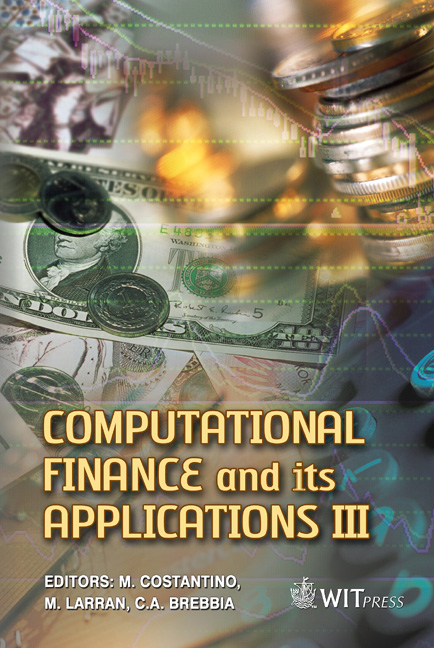Value At Risk, Outliers And Chaotic Dynamics
Price
Free (open access)
Volume
41
Pages
9
Page Range
197 - 205
Published
2008
Size
358 kb
Paper DOI
10.2495/CF080191
Copyright
WIT Press
Author(s)
C. Kyrtsou & V. Terraza
Abstract
Financial returns series typically exhibit excess kurtosis and volatility clustering. The GARCH is often applied to describe these two stylized facts. Nevertheless, all excess kurtosis in stock returns cannot be captured by this model. In presence of such dynamics, a non-linear model in variance cannot take into account all the non-linearity in returns. The aim of this work is the study of relationships between chaotic dynamics, and outliers as well as their impact on Value at Risk. In this paper, our empirical study is based on the daily Nikkei returns series from 06/01/1987 to 14/03/2001. We apply the traditional GARCH and the Mackey- Glass-GARCH (Kyrtsou and Terraza (2003)) both to the initial and the filtered Nikkei returns series without outliers. The performance test of Lopez (1988) for Value at Risk models is then applied to determine the best model. We show that during the period of estimation, the GARCH and the Mackey-Glass-GARCH VaR models with (without) outliers at 95% overestimate (underestimate) risks. The filtering of outliers lead to underestimation of risk more accentuated during the Asian crisis period confirming the presence of severe distortions in the underlying structure of the series when removing extreme events. During this period, the Mackey-Glass-GARCH is better than the GARCH comparing the hedging rates. Keywords: GARCH model, Mackey-Glass GARCH model, Value at Risk, outliers. 1 Introduction The new regulations on banking supervision gave new dimensions in the application of Value-at-Risk (VaR) technique. During the last 10 years, VaR measures as well as its parametric estimation based on the volatility of stock returns have been considered as the standard measure of risk [1,7,21,22,23].
Keywords
GARCH model, Mackey-Glass GARCH model, Value at Risk, outliers.





